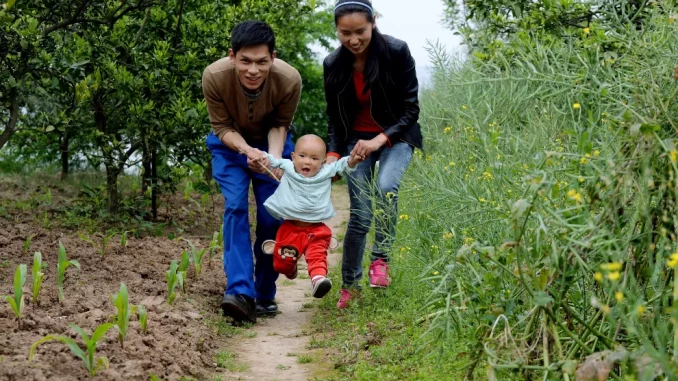
In detail, what does “Children’s health and development” mean?
From the first months through adolescence, children go through a period of rapid growth and development with their whole being – physical, cognitive as well feelings all in train. From here grows a child’s physical health; from here springs forth his happiness in life. This stage of childhood development, which includes childhood healthful beginnings, needs nourishment and care as well as a boost to help them succeed with their natural potential. To nurture the growth and well-being of children involves providing the care and resources required by them for life. The following article will explain how to raise healthy, happy kids; provide readers with advice on practical matters relating to children’s health and development.
The Question of Children’s Health and Development
Children’s health and development are key components of their total well-being and quality of life. Healthy growth includes the physical, cognitive, emotional development that spans from infancy to adolescence. From birth through these formative years, children learn everything they will ever need for a good start in life: essential skills, making friends and building relationships.
To promote children’s health and development, it is important to create a nurturing environment Children need their physical needs met, emotional support from loved ones. They must be social beings within their physical environment since controlling over how a situation shapes up is not something that one has individually; rather, it becomes a shared experience where others act on the parts that influence their own destiny. Parents playing an active role in shaping these first years of life will have lasting effects on the marital satisfaction, health and career success reflection later on in their children’s lives.
What are the factors affecting Children’s Health and Development?
Nutrition: Proper nutrition is essential for children’s growth and development, giving them the energy and nutrients they need to promote healthy growth, cognitive function and immune response. A diet that includes plenty of fruits, vegetables, whole grains lean cuts of meat, beans and peas can go a long way towards putting children on track for growing up healthy!
Physical activity: Children’s physical health depends largely on the regularity with wich they are engaged in moderate-to- vigorous exercise. It is important to include both muscle and bone development as well as cardiovascular health for children; however the practise of motor activities that masquerade as “games” also keeps them fit! In non-urban settings the children to run and play freely have good habits which may last them their whole lives, and are kept lean and muscular.
Emotional and Social Support: The emotional and social support of parents, caregivers, and peers is crucial to children’s emotional well-being social development. If we want strong relationships with open communication bringing along family harmony then our homes should be sweetly beautiful places: This fosters both personal resilience (by which boys make mettle of adversity) & self-esteem in children; if we have a loving environment it naturally follows that they will also grow up loving others and live primarily at peace within themselves.
Early Childhood Education: Early childhood education plays a vital part in children’s cognitive development and language skills as well as getting them ready for school. High-quality early childhood programmes involve children in stimulating learning experiences, solid relationships and opportunities to explore and discover.
Access to Healthcare: Qualitative healthcare is necessary for children’s health and happiness. It provides preventive care, timely treatments of illness or injury and cure. Psychological healths depend on one’s sense of security–by seeking regular medical checks on what may be somethin which does not feel quite right at the moment we can help nudge things all back into line.
Practical tips for nurturing the growth and well-being of children
Parents, caregivers and community members who want to help children grow and thrive should:
Feeding Healthily: Offer a variety of nutritious foods looked for in all foods; fresh fruits, vegetables, whole grain foods and a variety of lean proteins and dairy products. Encourage children’s growth by eating different types of food at every meal.
Encouraging Physical Activity: Encourage children to pick up some moderate exercise, such as active play, sports, outdoor games in order to keep the body strong and the mind healthyThanks to a warm atmosphere, children grow up in healthy, loving environments where they can be both inwardly secure and resilient.
Promoting Mental Health and Emotional Well-being: Support the mental health and emotional well-being of children by enabling them to express themselves creatively, teaching coping skills such as distress and providing opportunities for open communication.
Place the Emphasis on Learning and Exploration
Turn play, books, art and music and nature provides opportunities for discovery with its ever-changing scenery
Settle into Regular Schedules and Draw a Line in the Sand
Placing children in regular schedules and setting firm boundaries helps them to identify structure, provides assurance of what lies ahead on their path forward
Make Use of Support and Resources
Turn to healthcare providers, educators and community resources for support, direction, information and tools to improve the health and development of children
In Conclusion
Children’s health and development are basic to their overall welfare in later life. By cultivating an environment of security for young children’s growth, as well as positive relationships and access to resources and opportunities, parents, care providers and the community can help children achieve their full potential. Investing in the health and development of children today does two things: Not only does it benefit each child as an individual, but its dividends also mean healthier, happier and more prosperous communities and societies for the future. Let us continue to prioritize the health and well-being of children, so that every child can expect a lifetime of health and happiness.